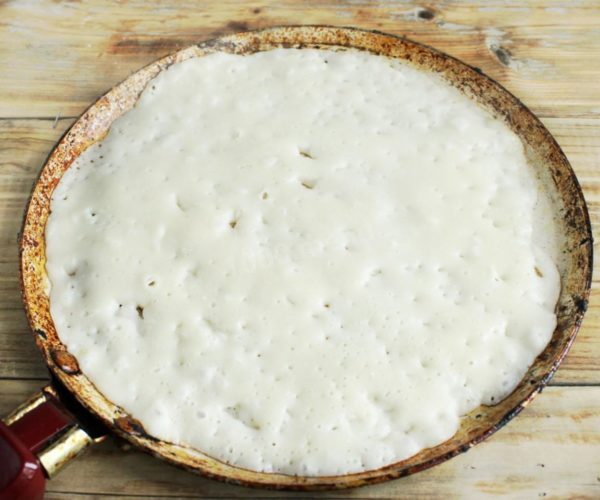Simple, fast, delicious. For a delicious tea party! Pancakes with thin eggs with holes are a great way to please your loved ones, even if there is no milk in the refrigerator. They turn out to be beautiful, delicate. Serve a fragrant, hearty treat with sour cream, condensed milk or jam.
| Prep Time | 10 minutes |
| Cook Time | 30 minutes |
| Servings |
|
Ingredients
- 2 pieces Eggs
- 250 milliliters Water
- 200 gram Wheat flour / Flour
- 1 gram Salt
- 0.5 teaspoon Sugar
- 1.5 tablespoon Vegetable oil
- 1 gram Vanilin
- 0.3 teaspoon Baking powder
Ingredients
|
Instructions
- How to make thin pancakes with holes using water? Gather all the necessary ingredients. Crack the chicken eggs (ensure they are at room temperature) into a deep bowl and add sugar. You can adjust the amount of sugar to your taste, but avoid using too much, as it can cause the pancakes to brown quickly and stick to the pan. For detailed tips on making perfect pancakes, refer to the article linked at the end of this recipe.
- Sift the flour into the liquid mixture, and don't forget to include the baking powder. It's advisable to sift the flour multiple times to aerate it. Add the flour in small portions, stirring thoroughly each time to minimize lumps. The precise amount of flour may vary, so aim for the desired consistency. You can find more information about flour properties in the article linked at the end of this recipe.
- To disperse any remaining flour lumps and achieve a consistent dough, allow it to rest on the table for 15 minutes. Then, use a mixer to beat the dough once more. Incorporate vegetable oil into the dough and mix well. The dough should be thin, ensuring your pancakes turn out thin and with holes. Now you're ready to start frying.
- For frying pancakes, it's best to use a dedicated pancake pan or a pan with a non-stick coating. Since we've already added vegetable oil to the dough, there's no need to add more oil to the pan (except for the first pancake). Cook the pancakes over medium heat, flipping them to ensure both sides turn golden brown. Once cooked, remove the thin and delicious pancakes from the pan and serve. Enjoy your meal!
Recipe Notes
Sifting the flour is a crucial step as it helps aerate the flour and ensures your pancakes will be light and fluffy.
Be aware that the amount of flour required may vary, so focus on achieving the desired dough consistency rather than strictly adhering to the specified quantity.
Additionally, selecting the right frying pan is essential for a successful outcome; the wrong choice can negatively affect your recipe.


















